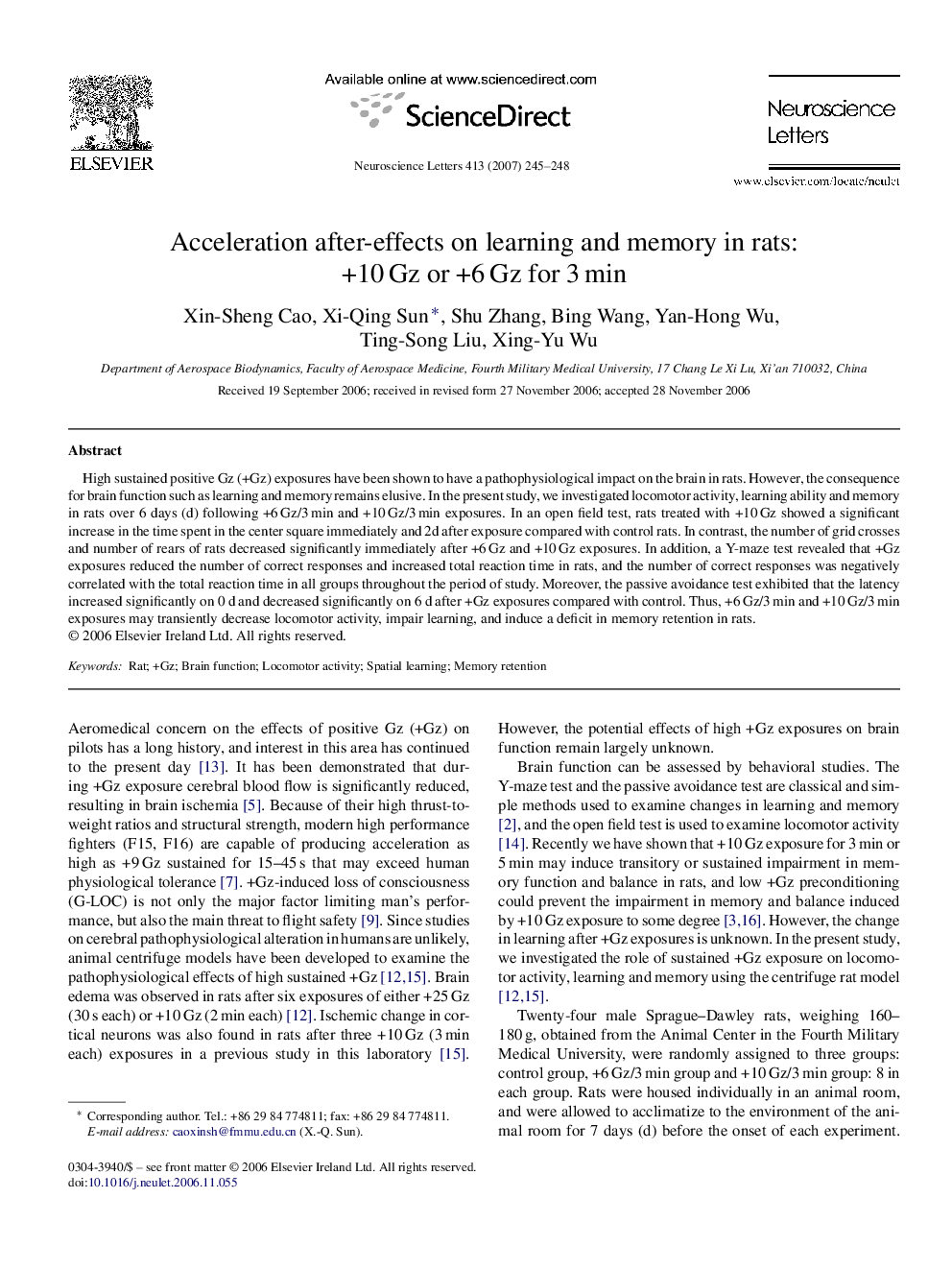| Article ID | Journal | Published Year | Pages | File Type |
|---|---|---|---|---|
| 4349957 | Neuroscience Letters | 2007 | 4 Pages |
High sustained positive Gz (+Gz) exposures have been shown to have a pathophysiological impact on the brain in rats. However, the consequence for brain function such as learning and memory remains elusive. In the present study, we investigated locomotor activity, learning ability and memory in rats over 6 days (d) following +6 Gz/3 min and +10 Gz/3 min exposures. In an open field test, rats treated with +10 Gz showed a significant increase in the time spent in the center square immediately and 2d after exposure compared with control rats. In contrast, the number of grid crosses and number of rears of rats decreased significantly immediately after +6 Gz and +10 Gz exposures. In addition, a Y-maze test revealed that +Gz exposures reduced the number of correct responses and increased total reaction time in rats, and the number of correct responses was negatively correlated with the total reaction time in all groups throughout the period of study. Moreover, the passive avoidance test exhibited that the latency increased significantly on 0 d and decreased significantly on 6 d after +Gz exposures compared with control. Thus, +6 Gz/3 min and +10 Gz/3 min exposures may transiently decrease locomotor activity, impair learning, and induce a deficit in memory retention in rats.
